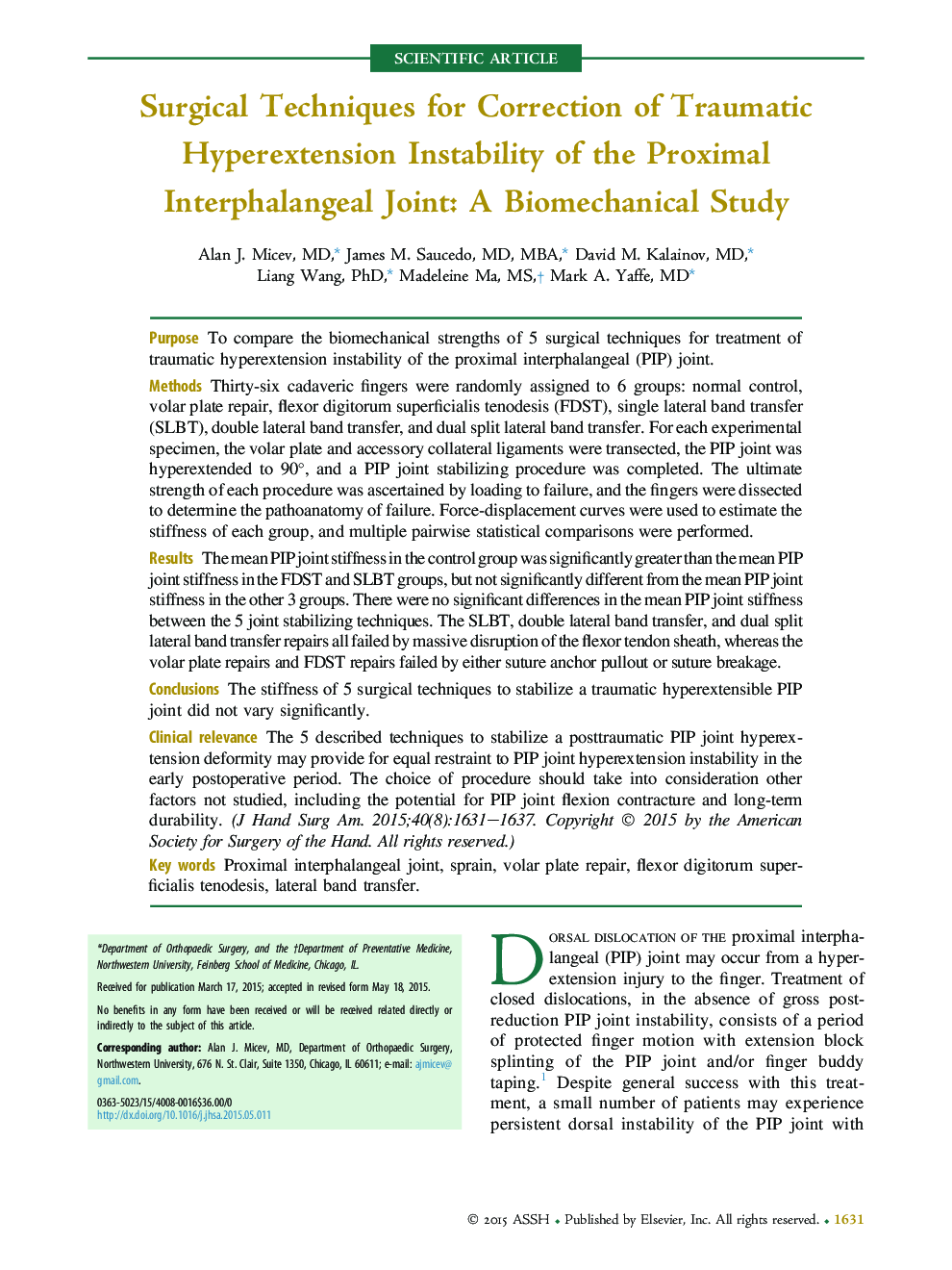| کد مقاله | کد نشریه | سال انتشار | مقاله انگلیسی | نسخه تمام متن |
|---|---|---|---|---|
| 4066492 | 1604354 | 2015 | 7 صفحه PDF | دانلود رایگان |

PurposeTo compare the biomechanical strengths of 5 surgical techniques for treatment of traumatic hyperextension instability of the proximal interphalangeal (PIP) joint.MethodsThirty-six cadaveric fingers were randomly assigned to 6 groups: normal control, volar plate repair, flexor digitorum superficialis tenodesis (FDST), single lateral band transfer (SLBT), double lateral band transfer, and dual split lateral band transfer. For each experimental specimen, the volar plate and accessory collateral ligaments were transected, the PIP joint was hyperextended to 90°, and a PIP joint stabilizing procedure was completed. The ultimate strength of each procedure was ascertained by loading to failure, and the fingers were dissected to determine the pathoanatomy of failure. Force-displacement curves were used to estimate the stiffness of each group, and multiple pairwise statistical comparisons were performed.ResultsThe mean PIP joint stiffness in the control group was significantly greater than the mean PIP joint stiffness in the FDST and SLBT groups, but not significantly different from the mean PIP joint stiffness in the other 3 groups. There were no significant differences in the mean PIP joint stiffness between the 5 joint stabilizing techniques. The SLBT, double lateral band transfer, and dual split lateral band transfer repairs all failed by massive disruption of the flexor tendon sheath, whereas the volar plate repairs and FDST repairs failed by either suture anchor pullout or suture breakage.ConclusionsThe stiffness of 5 surgical techniques to stabilize a traumatic hyperextensible PIP joint did not vary significantly.Clinical relevanceThe 5 described techniques to stabilize a posttraumatic PIP joint hyperextension deformity may provide for equal restraint to PIP joint hyperextension instability in the early postoperative period. The choice of procedure should take into consideration other factors not studied, including the potential for PIP joint flexion contracture and long-term durability.
Journal: The Journal of Hand Surgery - Volume 40, Issue 8, August 2015, Pages 1631–1637